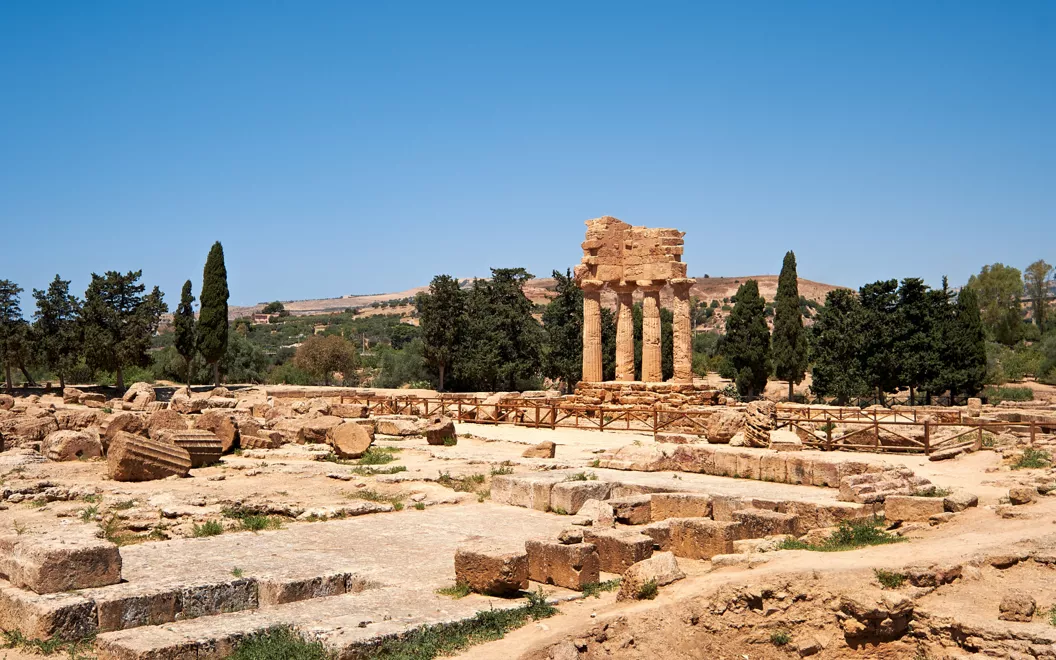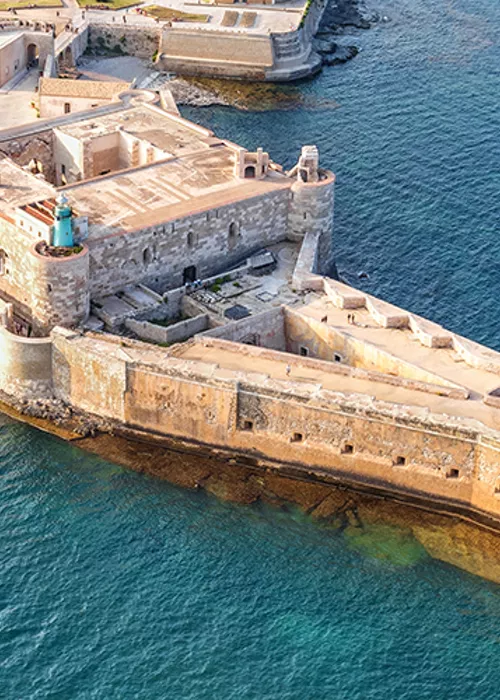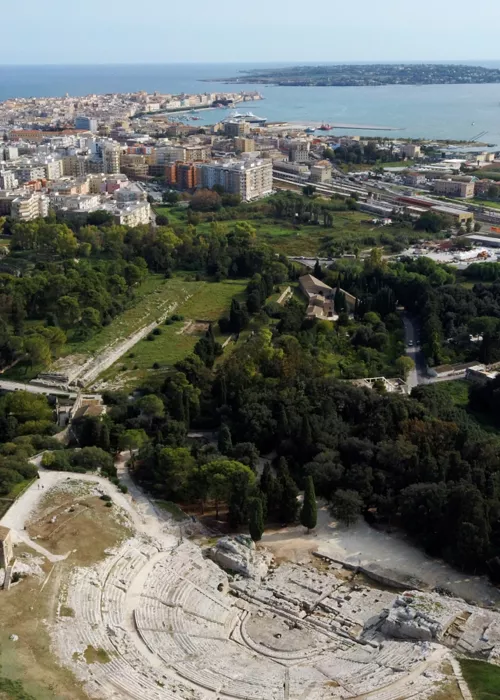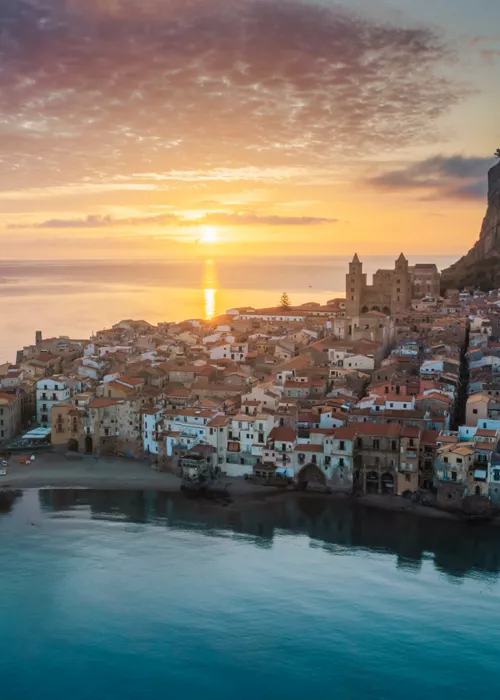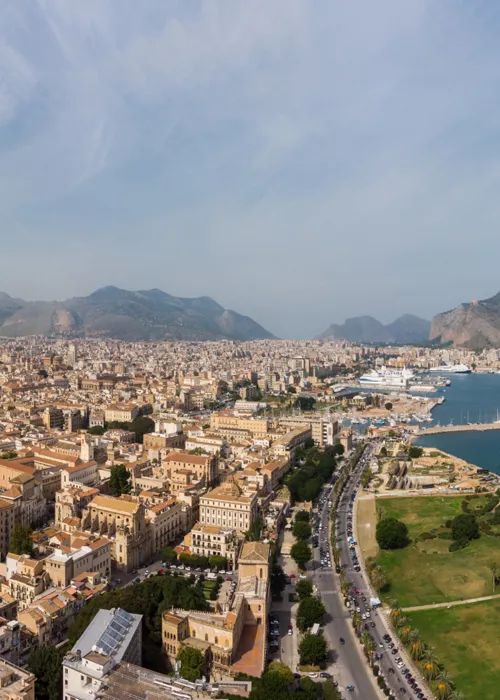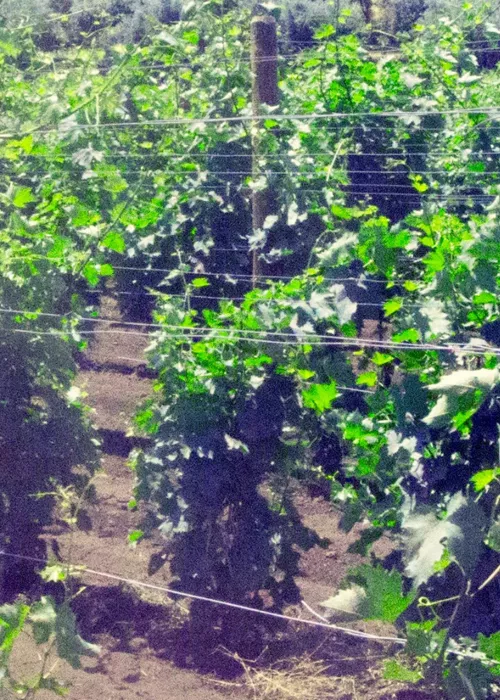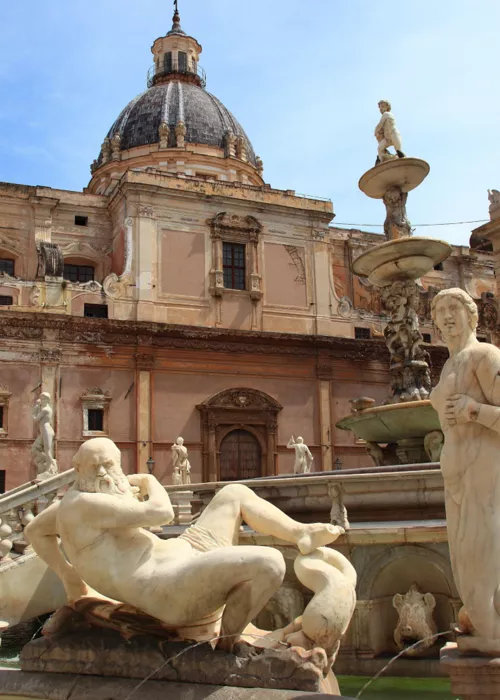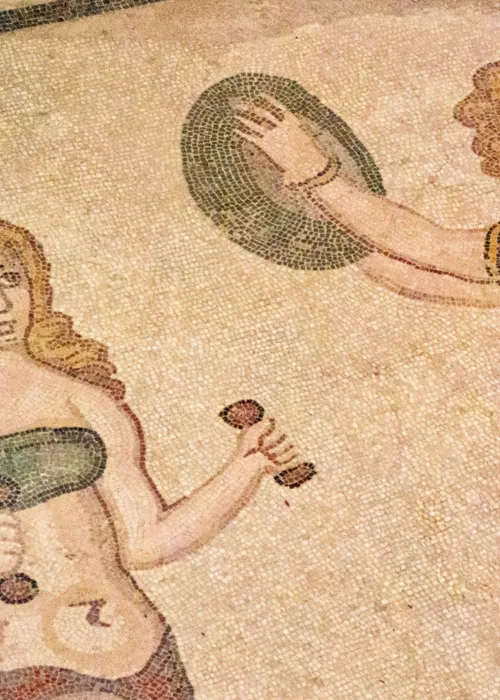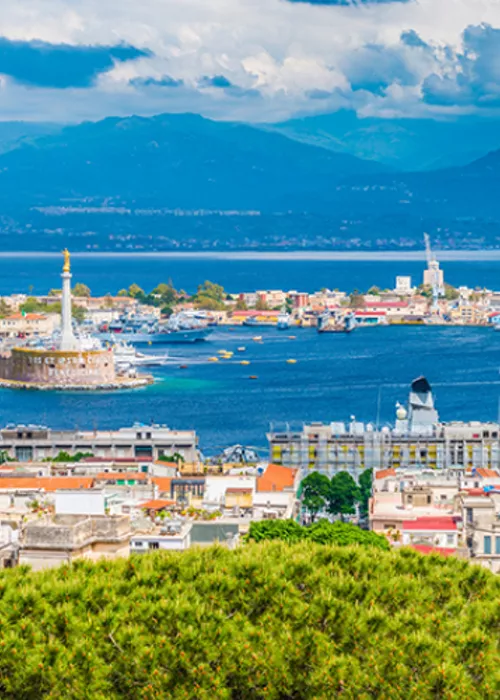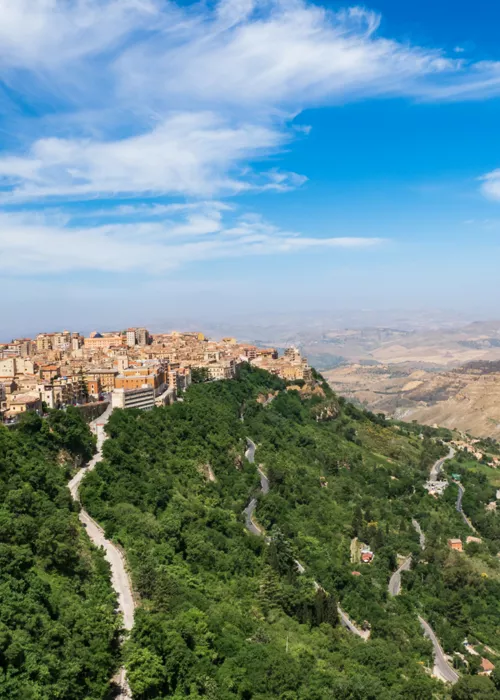Agrigento

The Greeks built ancient Akrakas between the rivers Hypsas and Akragas in 580 B.C. Fights and looting saw it pass through the hands of Carthaginians, Romans (who renamed it Agrigentum in around 210 B.C.), Byzantines, Arabs and finally Normans, but it never lost the privilege of being a location favoured by sages, philosophers and poets. Agrigento still retains many traces of its glorious and turbulent past: the medieval core on the hill of Girgenti, the winding streets typical of Arab cities, and the buildings and churches of different styles.
At first sight, the city shows a surprising image of itself and a double soul. This can be seen as you arrive from the coastal road, when the temples appear, high up on the rocky crag that interrupts the slope of the hill, those of the ancient Greek city and those of the archaeological area, declared a Unesco World Heritage Site.
While beyond the slope, dotted with olive and pine trees, you can see the new town, dominated by the striking St. Gerlando Cathedral, with its medieval and 'chaotically' modern face. Before leaving Agrigento, take a stroll along its elegant Via Etnea and go especially to St Mary of the Greeks, one of the most fascinating places in the provincial capital. It is reached by climbing up via Matteotti, or 'Bac a Bac' (from the Arabic for 'plundering', in memory of the raid that occurred there), then up the steps of via Saponara.
Valley of the Temples

The Greek poet Pindar described Agrigento as the "most beautiful city among the land of the living". Its ancient splendour can be imagined today, without effort, because a glance at the important remains of the temples is enough to allow one to experience, even in our times, the strong emotions that Goethe describes having felt during his trip to Sicily. It is certainly no coincidence that Unesco,in 1997, included the Valley of the Temples in the World Heritage list.
Here you really go back in history, and by a lot: most of what you can admire today dates back to the 5th century BC. The style is Doric, the simplest and oldest of the Greek architectural orders. The building material is sandstone tufa conchiglifero, the local deep yellow porous limestone; some white traces on the surfaces suggest that the stone was covered with a plaster of marble dust. All around, nature is intense, wild and powerful, with olive, almond and carob trees.
Early in the morning or at dusk, to avoid walking under a blinding, burning sun, one moves between the temple dedicated toHera Lacinia, which the Romans renamed Junolocated on the panoramic top of the hill, to that of the Concordia, which brings to mind the Parthenon in Athens and stands as one of the most perfect and best preserved works of Doric architecture. Then we come to the temple of Olympic Jupiter without raised columns, but with statues lying on the ground that appear to be sleeping. Also, the sanctuary of Demeter and Kore (6th-5th century BC) and the temple of Castor and Pollux the Dioscuri: the four surviving columns have become the symbol of Agrigento. Finally, the Garden of Kolymbetra with its five hectares of delightful vegetation between tufa walls.
The visit can be free or guided; you can follow an unusual itinerary to discover the landscape and flavours of the Valley. The marked path is an initiative created in the framework of theDiodoros project thanks to which, since 2005, the artistic, cultural, landscape and agricultural heritage of the fertile 1,300 hectares of the archaeological park has been protected and enhanced. Because, while it is true that the temples of Agrigento have an archaeological and historical value of absolute interest, it must be known that the land on which they are located is a source of a varied and important environmental biodiversity, of olive trees, vines, pistachios, almonds and other varieties of Sicilian fruit cultivation. The Diodoros project has expanded to become a real selling brand of exquisite products from the Valley of the Temples. After the visit, the valley becomes, on occasion, the stunning setting for evening shows and concerts.
Scala dei Turchi

It is an incredible sheer cliff face along the coast of Realmonte, near Porto Empedocle. La Scala consists of marl, a sedimentary rock of calcareous and clay-like nature, with a characteristic pure white colour. The cliff rises in the middle between two fine sandy beaches, and to access it, one must proceed along the shoreline and climb a slope resembling a grand natural staircase of limestone. The name comes from past raids by Saracen pirates who found shelter here from the winds.
Heraclea Minoa

Due to its enchanting geographical position, near the mouth of the Platani river, it is one of the most beautiful archaeological sites in Sicily. The ruins are those of a very ancient Spartan colony dedicated to Hercules, long disputed between Selinunte and Agrigento, then conquered by the Romans in 210 BC, but abandoned perhaps due to a landslide. Excavations have uncovered sections of the wall, the theatre from the 3rd century B.C. and part of the residential quarter, but beyond their consistency, it is above all the suggestive ambience that recommends a visit. In the local antiquarium, the finds unearthed move the origin of the settlement even further back in time, revealing not only Cretan and Phoenician presences, but also Neolithic frequentations.
Sciacca

A beautiful and colourful town spread out on rocky plateaus sloping down to the sea, between the limestone heights of Mount Kronio to the north and Cape San Marco to the west. Thermal, agricultural and maritime fortunes - and the composite events of history - have left a remarkable heritage of churches and palaces. The town's vibrant craftsmanship is evident, even from a mere stroll through the streets of the centre, particularly the ceramics, with production of vases and wall panels in a Renaissance style that betrays the ancient roots of the art (from the 15th century), in bright colours of yellow, orange and turquoise. The Sciacca Carnival, with its parade of allegorical floats, is one of the oldest and most charming in Sicily. There is also a dedicated museum, in Via Fratelli Bellanca, on the town's western outskirts. Sciacca is also an important fishing port, known for the delicious fish which is exported from here to the rest of Italy. A few kilometres from the town centre, you can visit the unique Enchanted Castle, a 'garden museum' that's home to the sculptures of Filippo Bentivegna, a local artist who was one of the greatest exponents of art brut or outside art, whose legacy to his native town is a series of heads sculpted in the rock.
What is the best way to get to know Sciacca? Ask the locals. 2021 saw the opening of the "5 Senses" scattered museum, a community project that pays tribute to the identity of this beautiful town. Artisans, local businesses, hotels, restaurants and cultural and trade associations all worked together to enable visitors to explore long-forgotten places such as the natural thermal caves. The varied activities on offer include making pottery, coral jewellery, marzipan fruit and papier-mache face masks, olive oil tasting and cooking traditional local dishes.
Sambuca of Sicily

A village of Arab origin, until 1921 called Sambuca Zabut with reference to the castle that Emir Zabuth had built in the upper part of the settlement. The castle has fallen into ruin, but the adjoining old farmhouse remains. Testifying to the Arab roots, there is the intricate fabric of blind alleys and courtyards, which represents the most interesting example of Islamic urbanism in Sicily. Between the 16th and 17th centuries, most of the churches and palaces along Corso Umberto I were built, completed in the 19th century with various stately buildings. Along the corso you reach Piazza della Vittoria, where the Chiesa del Carmine stands. At the top of the Saracen quarter is the Chiesa Madre and the belvedere terrace, with a superb view of the countryside. 7 km north of Sambuca di Sicily, there is the area of Monte Adranone site of an ancient Greek city founded by Selinuntine settlers in the second half of the 6th century B.C., the finds from which are preserved in the Panitteri Palace Archaeological Museum. All this historical, artistic and architectural wealth has made Sambuca di Sicilia one of the most beautiful villages in Italy. Yet, the risk of depopulation is very high. The municipality has, therefore, joined the '1 Euro Houses' initiative,whereby dilapidated houses can be bought for the symbolic cost of one euro, with a commitment to renovate them within three years.
Caltabellotta

From the top of a dolomite rock, the village reveals the pre-eminent military function it has performed since its birth, through an image of strength and compactness that contrasts with the gentle relief of the island's southern coastline. It owes part of its fame to its warlike strength, as it was here, on 31 August 1302, that Charles of Valois and Frederick II of Aragon concluded the peace treaty that ended the bloody war of the Sicilian Vespers, the famous Peace of Caltabellotta. Before acquiring the Arabic name of Qal'at al-Ballut (“Oak Rock”), it was called Triocala, meaning “Three Beautiful Things”.These, according to Diodorus Siculus, consisted of the rich spring waters, the fertile land planted with vines and olive trees, and the impregnable cliff for natural protection. These are precious assets, which the town still preserves, along with the medieval urban fabric, typical of a mid-mountain settlement in the Mediterranean area. Among the religious buildings, the Chiesa Madre stands out. A short distance to the west of the village, you can visit theHermitage of S. Pellegrino, whose architectural mass, set on the western slope of the fortress, dominates the town from above. The complex, consisting of a 17th-century AD chapel and the adjoining hermitage, enlarged in the 18th century AD, stands near two deep overlapping caves, where, according to an ancient legend, a dragon dwelt, feeding on the children of Caltabello, who was killed by the saint to free the town. Within these rock sanctuaries are some 18th-century frescoes, niches and rudimentary furnishings that testify to the antiquity of the cult.


